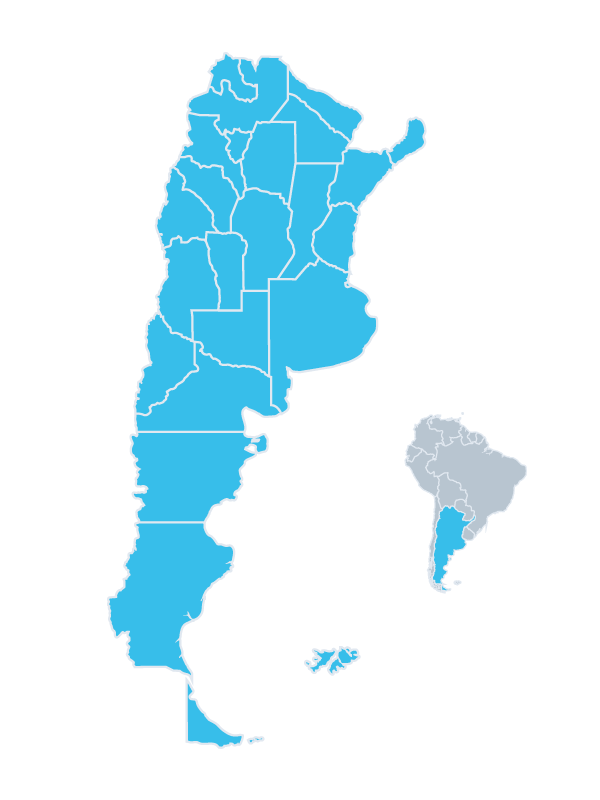Northeast: Iguazu Waterfalls and Natural Wildlife
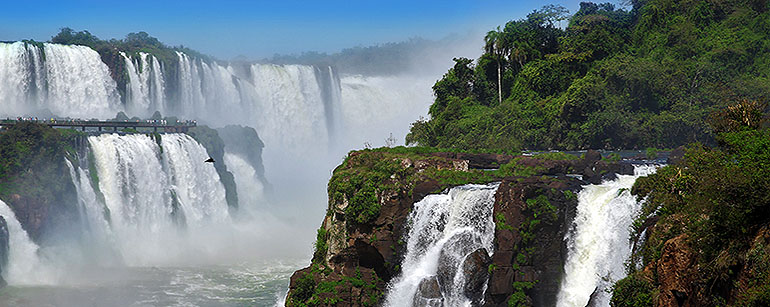
The Iguazu Falls are one of the most beautiful zones of the country, where nature shows one of its more wonderful and exuberant sides. In Guarani language the word waterfall means “Big Water”. It is the region of the red soil, big rivers, extraordinary fauna and virgin rainforest in all its extent, which comprises more than 2.000 different plant species. The region presents one of the most singular attractions of Southamerica and the world: Iguazú Waterfalls, declared by UNESCO as “Natural Heritage of Humanity”. Although they are located on Argentine soil, the region is shared with Brazil, since the Iguazú National Park is complemented with another one very similar of that country and the views of the waterfalls can be appreciated from both territories with different angles. They are made of 275 falls of water of up to 70 meters high, streamed by the plentiful Iguazú River. Either Foz do Iguazú in Brazil, or Puerto Iguazú in Argentina have the greatest hotels and services of the region.
The “picadas” that go deep in the wild zone of the park will let you observe, not only the multitude of plant species but a rich fauna and a great quantity and variety of birds and poultries, like the beautiful and colorful toucans.
Other attractions not so crowded, but still interesting to visit, are the Falls of Moconá, the National Park Pilcomayo River, the National Park El Palmar and the Iberá Marshes as well.
The Iberá Lake and marshlands are among the last natural paradises on earth. Visitors can get face to face with caimans, capybaras, swamp deer, pampas deer, howler monkeys, giant otters, anacondas, greater rheas and hundreds of birds. The wetlands cover over 13,000 km² of marsh with over 60 lakes. The nature reserve, founded in the year 1983, is located 800 kilometers north of Buenos Aires.
Due to its mild climate and isolation, the marsh is an area where wild animals are still the stars. Within Argentina and Southamerica, the Iberá Wetlands are the Ornithologist’s Mecca. Over 350 species of birds live in this virgin landscape and most of them can be spotted easily.
To the south of the Iguazu waterfalls and a few miles north from Posadas city (the provincial capital) you can find very important ruins from the prolific work of the Jesus Company in Southamerica. It can be seen samples from the constructions of the different settlements built by said company during the seventeenth and eighteenth centuries. Among them, it can be mentioned the Ruins of San Ignacio Miní, at 35 miles from the provincial capital, which were declared by UNESCO as “Cultural Heritage of Humanity”. This Jesuit work gave the name to the province (Misiones, in English: Mission) and was outstanding by multiple historical, cultural and artistic productions; in this region, for instance, the movie “The Mission” was shot.
Mesopotamia Argentina region (Misiones / Corrientes / Entre Rios) has a damp subtropical climate. The best season to visit the waterfalls is during autumn and spring as the average temperature is around 25ºC. Summer is very damp (100% humidity) and very hot, reaching higher levels than 40º. Winter is also recommended to know this region.
What can we do there?
-
Visit to the Waterfalls (Argentine route)
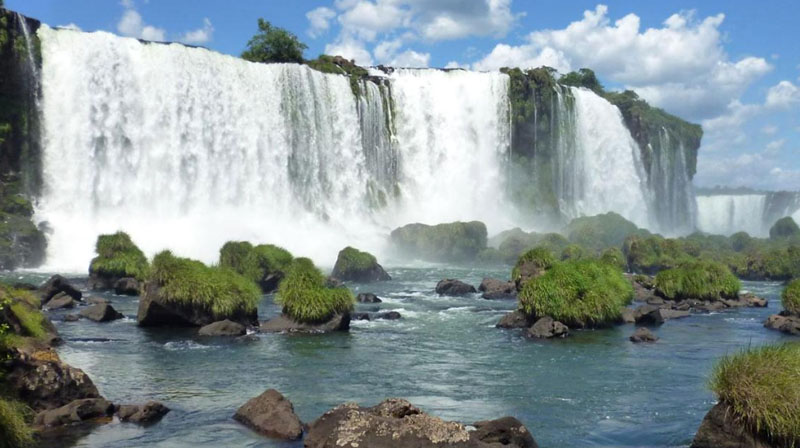
Tour to the National Park of Iguazú: the visitor will find more than 270 water falls along the cliffs and islets, split into a half moon that is the shape of this beautiful geographical feature. From the visitors’ center, the paths can be covered on foot or a picturesque little train can be chosen for that purpose. The National Park has two circuits to be covered: one at a lower surface and the other at the upper one. In the lower circuit, one can reach the base of the falls, where the magnificence of their beauty can be appreciated. In the upper circuit, the tour is a bit more sedentary where unique landscapes can be viewed from footbridges and viewpoints, which makes the tour an unforgettable experience.
-
View from the Waterfalls (Brazilian route)
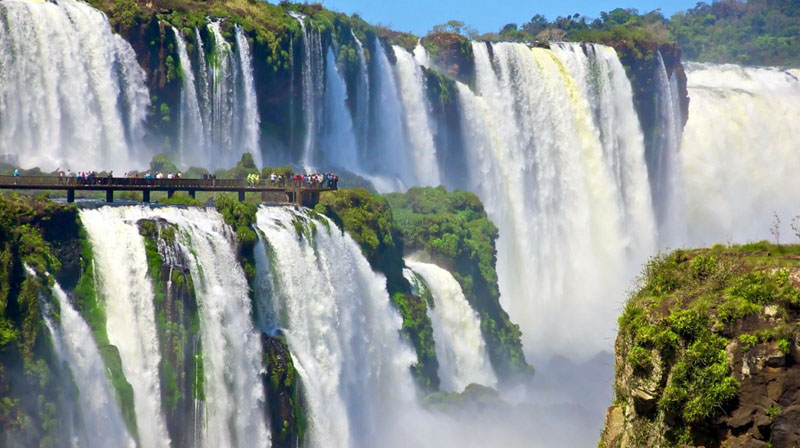
Visit to the National Park do Iguazú, in Brazil: It is a giant balcony from where the waterfalls in all their extent can be viewed, having also the choice of observing them from more distant and wider angles. The area to be covered is made of an only circuit of footbridges that is located in front of the falls, and offers a panoramic view which is really astonishing. The tour offers a wide route from which all the splendor of the landscape falls and waterfalls can be observed.
-
The Great Adventure
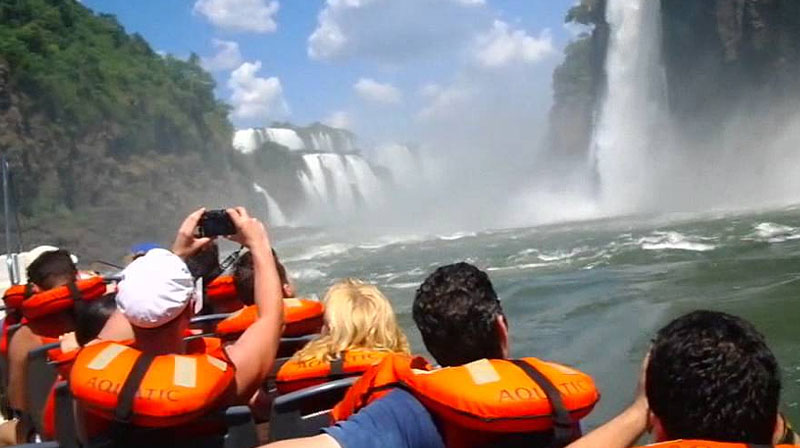
It can be done while visiting the argentine route to the waterfalls. This safari combines a tour of 5 miles through the rainforest in four-wheel-drive vehicles and a sailing tour along the Iguazú River. The trip starts in the Macuco Port on board of semi rigid rubber dinghies. The navigation along the river includes 1.25 miles of rapids, getting a close view of the great Canyon called Garganta del Diablo, which is the more outstanding fall of the group. We are talking of a unique experience that allows you- if you feel like getting pretty wet and joining intense emotions – reach the base of one of the falls.
-
Ruins of Saint Ignacio and Mines of Wanda
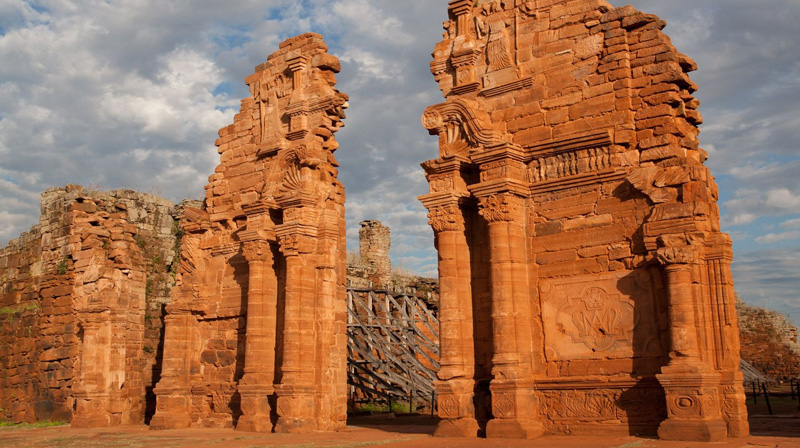
This tour combines the visit to the ruins of the old Jesuit missions, located at 169 miles to the south of Iguazú, with the visit to the Mines of Wanda, another regional attraction where you will be able to admire the variety of designs and colors that nature has developed, as time goes by, in these semi gemstones (agates, amethysts, etc). These mines are exposed at the open sky.
-
Moconá Falls
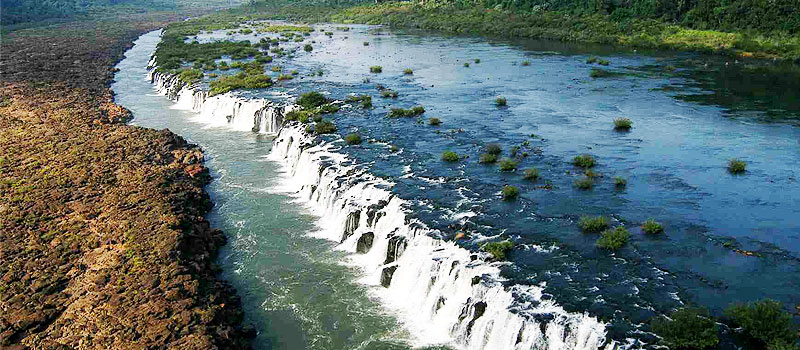
To the south of Iguazú Port, at the border of Misiones province with Brazil, the Uruguay River has falls of a great beauty forming a longitudinal front line of 1.87 miles, with falls of up to 12 meters high. The closest city to the falls is El Soberbio, a place of great natural beauty and an important manufacturer of essential oils. From this city you can go to the falls by launch or by land.
-
Iberá Marshlands
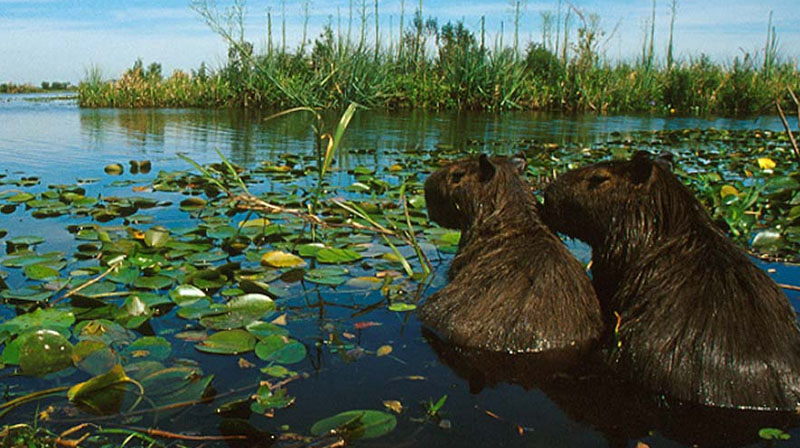
In the neighbor province of Corrientes is found this humid area that is made up of a great number of hectares of small lakes, swamps and bogs. All of these make a singular ecosystem that allows the survival of turtles, monkeys, alligators, deers of the marshes and capybaras – the biggest rodent of the world – and even 400 species of different birds, apart from an extraordinary flora. Its better access is from Carlos Pellegrini Colony.


